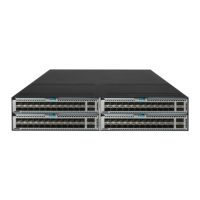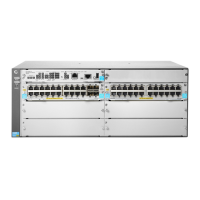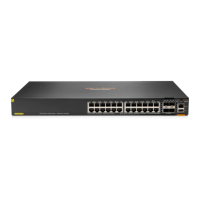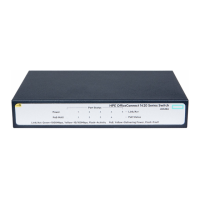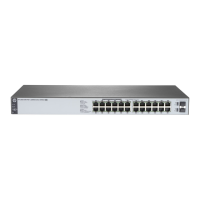70
--------------------------------------------------------------------------------
XGE1/0/1 S 32768 1
XGE1/0/2 S 32768 1
Aggregate Interface: Bridge-Aggregation2
Aggregation Mode: Static
Loadsharing Type: Shar
Management VLANs: None
Port Status Priority Oper-Key
--------------------------------------------------------------------------------
XGE1/0/3 S 32768 2
XGE1/0/4 S 32768 2
The output shows that:
• Link aggregation groups 1 and 2 are both load-shared Layer 2 static aggregation groups.
• Each aggregation group contains two Selected ports.
# Display all the group-specific load sharing modes on Device A.
[DeviceA] display link-aggregation load-sharing mode interface
Bridge-Aggregation1 Load-Sharing Mode:
source-mac address
Bridge-Aggregation2 Load-Sharing Mode:
destination-mac address
The output shows that:
• Link aggregation group 1 load shares packets based on source MAC addresses.
• Link aggregation group 2 load shares packets based on destination MAC addresses.
Layer 2 edge aggregate interface configuration example
Network requirements
As shown in Figure 16, a Layer 2 dynamic aggregation group is configured on the device. The server
is not configured with dynamic link aggregation.
Configure an edge aggregate interface so that both Ten-GigabitEthernet 1/0/1 and
Ten-GigabitEthernet 1/0/2 can forward traffic to improve link reliability.
Figure 16 Network diagram
Configuration procedure
# Create Layer 2 aggregate interface Bridge-Aggregation 1, and set the link aggregation mode to
dynamic.
<Device> system-view
[Device] interface bridge-aggregation 1
[Device-Bridge-Aggregation1] link-aggregation mode dynamic

